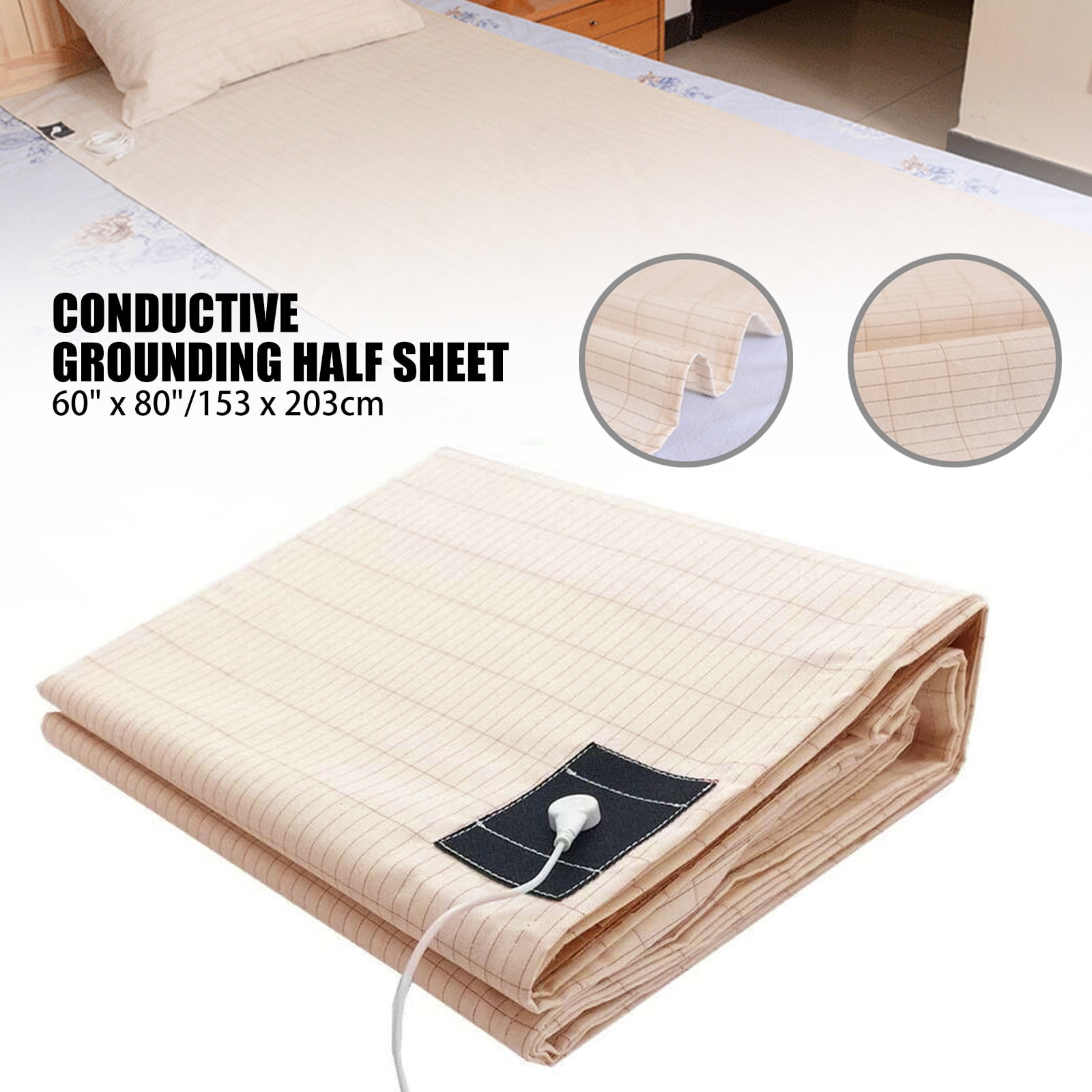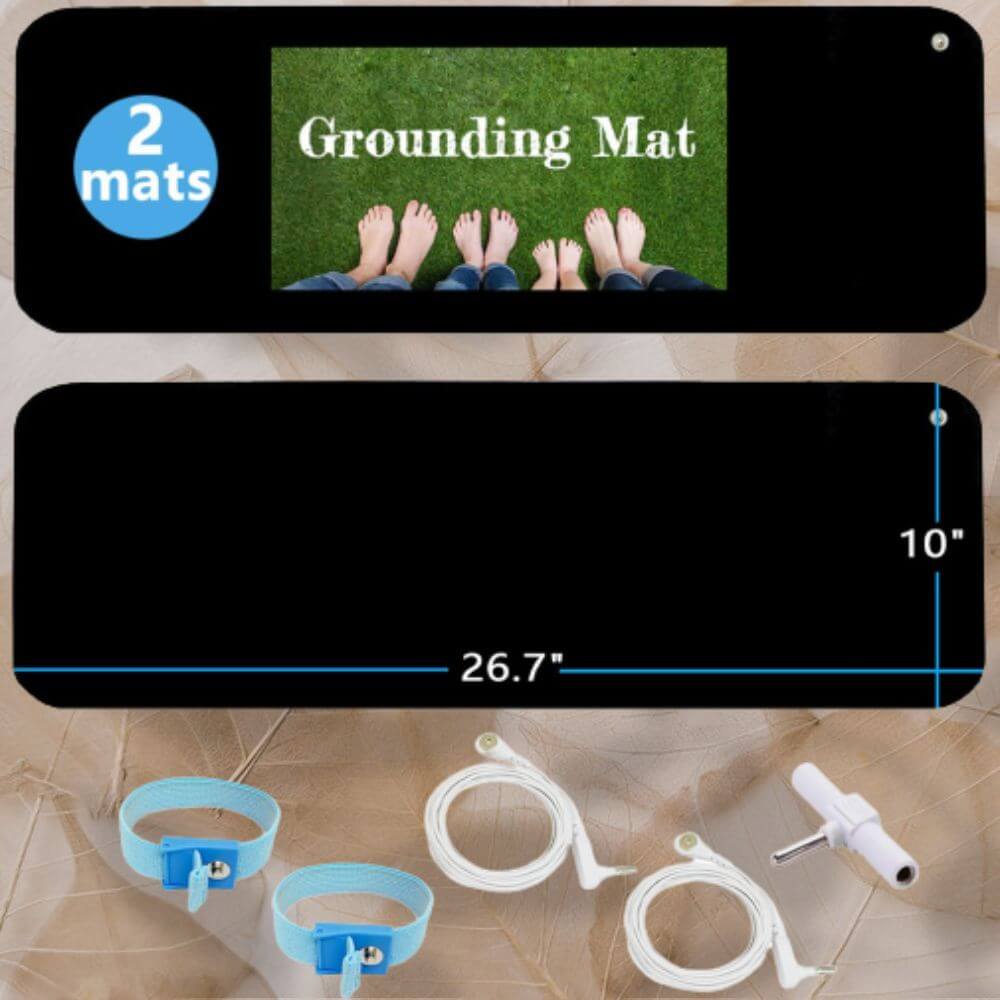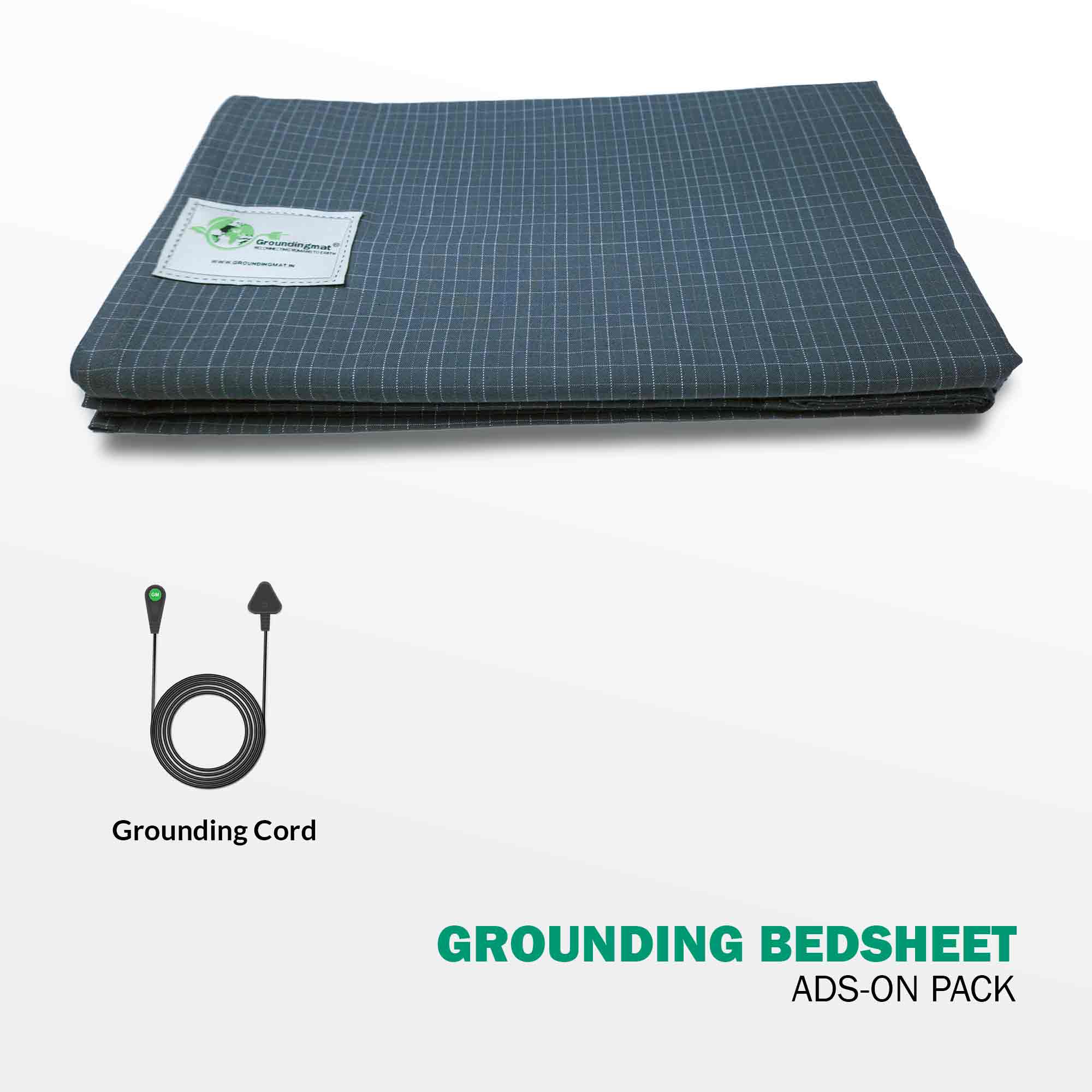What Are Grounding Mats Made Of

Imagine the soft, cool earth beneath your bare feet, the subtle energy tingling, a sense of calm washing over you. Now, picture capturing that feeling, that connection, and bringing it indoors. That's the promise of grounding mats, and it all starts with understanding what they're made of. But what exactly *are* these mats composed of that allows them to seemingly mimic the earth's natural energy?
At their core, grounding mats are designed to facilitate the transfer of electrons from the earth to your body while you're indoors. Understanding the materials used in their construction is essential to grasp how they work and assess their quality.
The Anatomy of a Grounding Mat
Grounding mats aren't just any ordinary mats; their unique construction allows them to conduct the earth's electrical energy. Typically, they're made of a combination of conductive and non-conductive materials, each playing a specific role.
Conductive Materials: The Key to Connection
The conductive element is the most crucial part of a grounding mat. This material is what allows the electrons to flow from the grounding source (usually an electrical outlet's ground port) to your body.
Carbon is a frequently used material. It is often infused into rubber or polyurethane to create a conductive surface. The percentage of carbon can vary, and higher percentages generally indicate better conductivity.
Some mats utilize silver. Known for its excellent conductivity and antimicrobial properties, silver is often woven into fabric or incorporated as fibers within the mat's surface. Silver is generally considered a premium option.
Stainless steel is another option. Fine stainless steel fibers can be woven into the mat's fabric, providing a durable and effective conductive pathway.
Non-Conductive Materials: Comfort and Safety
While conductivity is essential, comfort and safety are equally important. Non-conductive materials provide insulation, cushioning, and durability.
Rubber is a common choice for the base of grounding mats. It provides a non-slip surface and can be infused with conductive materials like carbon.
Polyurethane is another popular option. It's often used as a coating or a base material. It is chosen for its durability and ease of cleaning.
Cotton or other fabrics are frequently used as a top layer. They provide a comfortable surface for skin contact.
Delving Deeper: Material Specifications and Quality
The effectiveness of a grounding mat isn't solely determined by the type of materials used, but also by their quality and construction. Paying attention to the details can help ensure you're getting a product that delivers on its promises.
Consider the carbon percentage in carbon-infused mats. A higher percentage generally indicates better conductivity. Look for products that specify the carbon content.
For silver-infused mats, inquire about the type of silver used and its purity. High-quality silver will offer superior conductivity and antimicrobial benefits.
The weave density and material gauge matter in stainless steel fiber mats. Denser weaves and thicker fibers contribute to better conductivity and durability.
It is critical to check for safety certifications. Look for certifications from reputable organizations that test for electrical safety and material quality. These certifications ensure the mat meets certain safety standards and won't pose a risk of electrical shock.
The Significance of Material Choice
The materials used in grounding mats directly impact their effectiveness, durability, and safety. Understanding the properties of each material allows consumers to make informed decisions and choose products that best suit their needs.
Conductivity is paramount. Without adequate conductivity, the mat won't effectively transfer electrons from the earth to your body.
Durability ensures longevity. High-quality materials and construction mean the mat will withstand daily use and continue to provide grounding benefits for years to come.
Safety is non-negotiable. Using certified materials and adhering to safety standards protects users from potential electrical hazards.
Beyond the Materials: Connecting to Nature
While understanding the composition of grounding mats is important, it's equally essential to remember the underlying principle: connecting with the earth's natural energy. Grounding mats serve as a convenient tool to facilitate this connection indoors, but they are ultimately a reminder of our inherent link to the planet.
The increasing awareness of grounding practices reflects a growing desire to reconnect with nature. Many people have found grounding to have multiple benefits.
As we continue to explore the science and benefits of grounding, it's crucial to approach it with a balanced perspective. Grounding mats are a tool, not a cure-all. They can be a valuable addition to a holistic wellness routine, but they shouldn't replace other healthy habits.
Ultimately, the story of grounding mats is a story of innovation, connection, and a renewed appreciation for the power of the earth. By understanding the materials they're made of, we can better understand their potential benefits and make informed choices about incorporating them into our lives. And perhaps, in doing so, we can cultivate a deeper connection to the natural world around us, even when we're indoors.









![What Are Grounding Mats Made Of Best Grounding Mat For Bed [Top 12 Picks] – Maine Innkeepers Association](https://m.media-amazon.com/images/I/41lu8NvrK2L.jpg)








